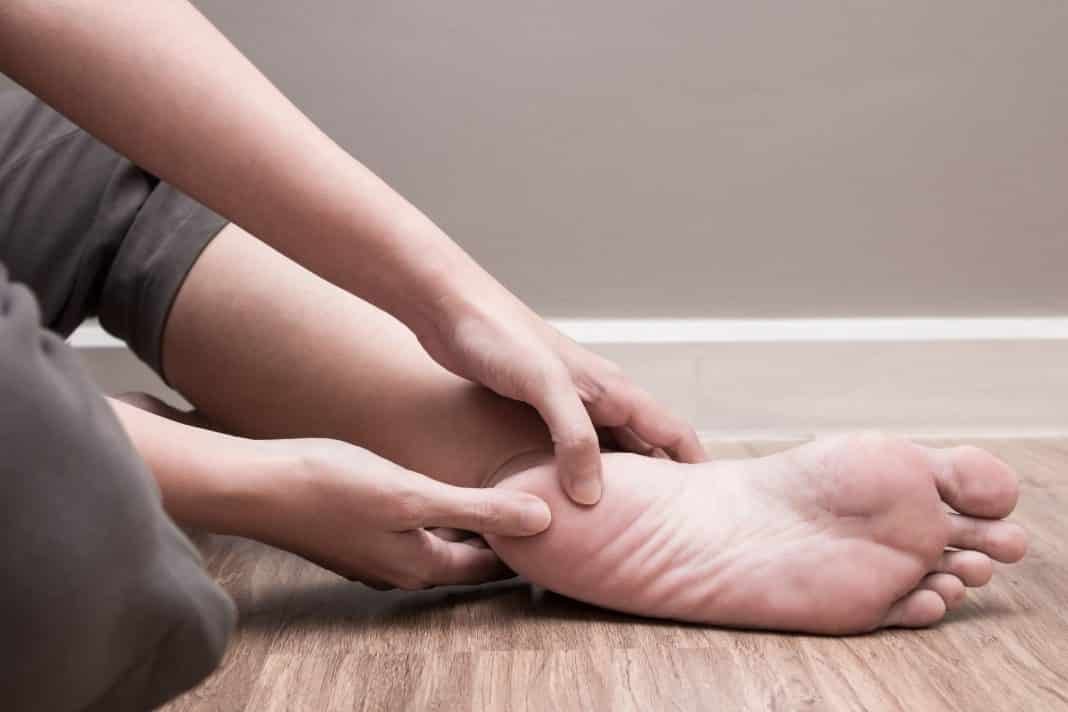Foot pain is a common symptom suffered by many people, especially in the heel area. A study shows that approximately 77% of people in the United States suffer from foot pain.
Both Plantar Fasciitis and Heel Spur affect the feet and can cause chronic heel pain interfering with your ability to walk, run or perform day-to-day activities. Hence, many people get confused between these two and do not understand which condition is causing their heel pain.
The plantar fascia is a soft, fibrous tissue that stretches from the toes to the heel of the foot. Inflammation of this tissue is called plantar fasciitis. The plantar fascia is the shock absorber of the foot. Degeneration of this tissue due to overload, injury or repeated stress causes chronic heel pain and inflammation of the plantar fascia.
The treatment for this condition can be simple most of the time. Resting the foot, wearing the right kind of sandal or shoe, using sole inserts, doing feet stretching exercises, using ice packs are some home remedies you can follow to reduce the pain. Anti-inflammatory medications and injections can also be used if the pain is chronic on certain days. In some severe cases, surgery is the last resort to reduce the pain.
What is a Heel Spur?
Heel spurs typically develop at the bottom of the heel where plantar fascia connects to the heel bone. When plantar fasciitis healing is delayed, the body recruits’ osteoblasts (cells that form a new bone) in the affected area as its healing mechanism and form a bony extension caused by the calcium build-up. These are also referred to as calcaneal spur. The spur grows often in the shape of a hook directing towards the plantar fascia. The main reason for such bony growth is the prolonged strain on the foot and inflammation of the plantar fascia. We may also say that heel spur develops as a secondary result of plantar fasciitis.
The treatment for heel spur is quite similar to that of the plantar fasciitis. In case conventional methods do not work, the last resort is surgery which can include removal of the spur or release of the plantar fascia.
What is causing your heel pain?
Most of the people who suffer from heel pain do not understand the cause of it. The frequent misconception amongst people is that the heel pain is caused commonly due to the bony protruding growth at the bottom of the feet. Heel spur is a common finding in many X-rays of people who do not suffer from any heel pain. In fact, a heel spur is the cause of heel pain in only 5% of the people.
This is good news as a vast majority of the people who have a heel spur do not suffer from heel pain. Mainly, the cause of heel pain in the majority of the population is due to plantar fasciitis. Many people who suffer from this condition also develop heel spur that is visible in their X-ray.
Heel pain due to heel spur occurs only when the bony growth protrudes and causes inflammation of the soft tissue of the fascia.
Another differentiation in the pain associated with these two conditions is the region of the foot they affect. Plantar fasciitis pain can travel throughout the sole from toe to heel affecting the entire length of plantar fascia whereas the pain associated with heel spur is localized to the heel region, but you can never be sure.
It is a difficult task to differentiate between these two on your own. Many people just assume heel pain to be due to plantar fasciitis. It is highly recommended to seek help from renowned podiatrist Dr. Sophia Solomon who can help you locate the source of chronic heel pain. Knowing the correct source of pain can help you undergo the right treatment.
ATTENTION READERS
We See The World From All Sides and Want YOU To Be Fully InformedIn fact, intentional disinformation is a disgraceful scourge in media today. So to assuage any possible errant incorrect information posted herein, we strongly encourage you to seek corroboration from other non-VT sources before forming an educated opinion.
About VT - Policies & Disclosures - Comment Policy




